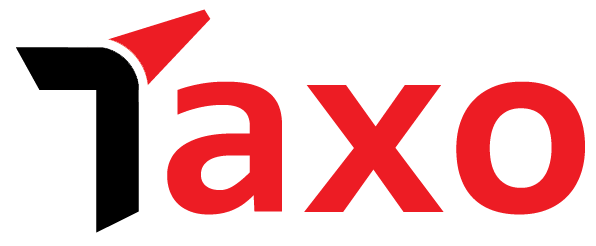
The CBIC has issued Notification No. 16/2025-Central Tax dated 17.09.2025, bringing into effect certain provisions of the Finance Act, 2025 related to GST w.e.f. 01.10.2025. The Provisions notified are summarized as under:
| Section of Finance Act, 2025 | Section of CGST Act, 2017 | Provision relating | Impact | |||||||||
| Section 121 [clauses (ii)] | Section 2(69) | Amendment in Definition of “Local Authority” |
Explanation. –– For the purposes of this sub-clause– (a) “local fund” means any fund under the control or management of an authority of a local self-government established for discharging civic functions in relation to a Panchayat area and vested by law with the powers to levy, collect and appropriate any tax, duty, toll, cess or fee, by whatever name called; (b) “municipal fund” means any fund under the control or management of an authority of a local self-government established for discharging civic functions in relation to a Metropolitan area or Municipal area and vested by law with the powers to levy, collect and appropriate any tax, duty, toll, cess or fee, by whatever name called. |
|||||||||
| Section 121 [clauses (iii)] | Section 2(116A) | Track & Trace Mechanism | Definition of “Unique identification marking” means the unique identification marking referred to in clause (b) of sub-section (2) of section 148A and includes a digital stamp, digital mark or any other similar marking, which is unique, secure and nonremovable. | |||||||||
| Section 122 | Section 12 | Omission of Sections 12(4) and 13(4) of the CGST Act, 2017. | To eliminate any ambiguity regarding the taxability of vouchers, it is proposed to omit the provisions related to the time of supply of vouchers under Sections 12(4) and 13(4) of the CGST Act, 2017. | |||||||||
| Section 123 | Section 13 | Amendment in Section 17(5) to replace phrase “plant or machinery” with “plant and machinery”, retrospectively, with effect from 1 July 2017 | ||||||||||
| Section 124 | Section 17 | Precondition relating to issuance of Credit Notes |
To Replace the term “plant or machinery” with “plant and machinery” in Section 17(5) of the CGST Act, 2017.
Rationale for the proposed amendment: The amendment aims to clarify the legislative intent behind Section 17(5)(d) of the CGST Act, which restricts Input Tax Credit (ITC) on certain items, including plant and machinery. The original wording, “plant or machinery,” created ambiguity about whether ITC applies to both plant and machinery together or only to one of them. To remove this confusion, the amendment replaces it with “plant and machinery,” ensuring both are treated as a single unit. Additionally, the explanation at the end of Section 17 of the CGST Act explicitly defines “plant and machinery” for legal purposes. This amendment aligns the language of Section 17(5)(d) with this definition, promoting consistency in interpretation across the Act. The amendment also seeks to insert an Explanation clarifying that it is made notwithstanding any judgment, decree, or order from any court or other. |
|||||||||
| Section 126 | Section 34 | Provisions relating to Invoice Management System |
Pre-Condition to reverse the Input Tax Credit by the registered recipient on issuance of Credit Note:
The Finance Bill 2025 proposed to amend the proviso to Section 34(2) of the CGST Act, 2017 to explicitly mandate the reversal of input tax credit (ITC) by the registered recipient, if availed, for a credit note to reduce the supplier’s tax liability. Additionally, it seeks to remove the condition requiring that the incidence of interest on the supply has not been passed on, for the purpose of reducing the supplier’s tax liability in respect of the credit note. |
|||||||||
| Section 127 | Section 38 | Restriction on filing return u/s 39 | Invoice Management System:
With the Introduction of Invoice Management System (IMS) (optional facility), the Taxpayer can accept/reject/keep pending the invoice/record on IMS after due verification from his accounts. The ITC for the rejected record will not be available to the recipient in the GSTR 2B. Further, input tax credit is being auto – populated in GSTR 3B of the taxpayer on the basis of portal-based input tax credit made available in his GSTR 2B. Thus, only the accepted invoices by the recipients would become part of their GSTR-2B as their eligible ITC, due to this manual intervention by the taxpayer such a statement cannot be said to be auto generated statement as per section 38 thus the proposed amendment in the act. Thus, the substitution in section 38 for the word “Auto Generated Statement” word “statement” is proposed to be substituted. |
|||||||||
| Section 128 | Section 39 | Pre-deposit for filing an appeal | To amend sub-section (1) of Section 39 to specify certain conditions and restrictions that must be followed by the registered person when filing the return. | |||||||||
| Section 129 | Section 107 | Penalty for non-compliance of Track and Trade Mechanism for certain goods | Pre-deposit for filing of appeals under GST for cases where the dispute is only regarding penalties and not the actual tax demand.
The amendments are tabulated as below:
|
|||||||||
| Section 130 | Section 112 | Track & Trace Mechanism | ||||||||||
| Section 131 | Section 122B | Amendment in Schedule III with respect to activities or transactions which shall be treated neither as a supply of goods nor a supply of services |
The insertion of Section 122B into the Central Goods and Services Tax (CGST) Act, 2017, introduces specific penalties for non-compliance with the Track and Trace Mechanism. According to this provision, failure to adhere to the Track and Trace requirements for specified goods will result in a penalty of Rs.1,00,000 or 10% of the tax payable, whichever is higher.
This measure aims to enhance transparency and ensure accurate tax reporting throughout the supply chain. It’s essential for businesses dealing with specified commodities to familiarize themselves with these requirements to avoid substantial penalties. |
|||||||||
| Section 132 | Section 148A | The insertion of 148A for introducing a “Track & Trace Mechanism.”
This system mandates the use of a Unique Identification Marking (UIM) on specified goods or their packaging, allowing for end-to-end monitoring across the supply chain. The UIM will include key details such as the date and location of manufacture, production shift, machine used, product description, quantity, maximum retail price, and the intended market for sale. By scanning the UIM, authorities can trace the movement of goods from the point of manufacture to the end consumer, thereby reducing instances of tax evasion and ensuring compliance with GST regulations. Furthermore, Section 2(116A) of the CGST Act, 2017, defines “Unique identification marking” means the unique identification marking referred to in clause (b) of sub-section (2) of section 148A and includes a digital stamp, digital mark or any other similar marking, which is unique, secure and nonremovable. The introduction of the Unique Identification Marking under the GST framework represents a significant step towards enhancing supply chain transparency and strengthening tax compliance in India. |
||||||||||
| Section 133 | Schedule III to CGST Act, 2017 |
It is also specified that no refund will be issued for any tax already collected on such transactions, which would not have been collected had Clause (aa) been in force at all relevant times. This amendment aligns the treatment of goods warehoused in SEZs or FTWZs with the existing GST provisions for goods stored in customs bonded warehouses, ensuring uniformity in tax treatment. |
||||||||||
| Section 134 | No refund shall be made of all such tax which has been collected, but which would not have been so collected, had section 133 been in force at all material times. |
To read the complete Notification https://taxo.online/wp-content/uploads/2025/09/16_2025-CT.pdf


